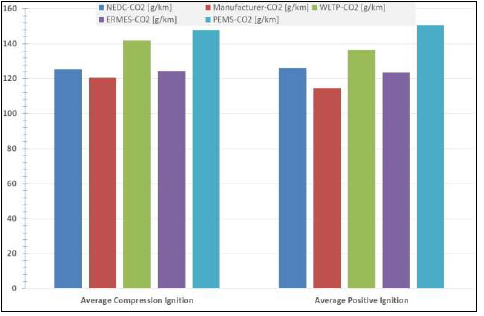Real Driving Emissions and Fuel Consumption
Purpose, Objectives and Key Questions
The levels of air pollutants from internal combustion engine (ICE)-powered vehicles being sold in the marketplace today are much lower than those from vehicles four to 10 years ago. This change is largely the result of technology forcing regulations to control the exhaust emission rates of various air pollutants such as hydrocarbons, carbon monoxide, oxides of nitrogen (NOx), and particulate matter. Those regulations reflect the extraordinary advances in fuels, engines, and emission control technologies that have been produced by automotive researchers/manufacturers over the past decades. However, there is further evidence to suggest that the performance of vehicles may not be fully captured in compliance or type approval tests, even though they are conducted with varying driving cycles and in an environmentally controlled chamber.
This project aimed to develop an emission rate, fuel consumption, and energy efficiency inventory of vehicles driven on-road in varying countries in typical seasonal corresponding climates, using vehicles fueled with advanced, renewable, and conventional fuels. Vehicle performance were investigated over typical regional driving conditions such as city, highway, arterial, free-speed, and congested routes. In short, the objective of this project was to explore the real driving emissions (RDE) and real-world performance of vehicles operating under a range of worldwide driving conditions.
Activities
The team finalized the Task 55 formal text in the summer of 2017 and defined the purpose, objectives, audience, and methodologies. The Task members completed the testing and data collection phase in early 2019. On-road testing and dynamometer testing results were shared and compared. Several participants defined their own real-world driving routes.
During a planning conference call of task participants held in August 2018, a timeline for completing Task 55 activities was developed, along with a uniform report outline for all Task 55 member contributions. Based on this timeline, the Task 55 date was extended from April 2019 to November 2019. Also, it was agreed upon to hold regular conference calls with technical updates. Calls began in September 2018 and continued until the task was completed in late 2019.
Key Findings
Of the tested vehicles, 94% showed a higher fuel consumption and emission of CO2 when tested in the New European Driving Cycle (NEDC) compared with the manufacturer declared values. Compared with data from normal use portable emissions measurement system (PEMS), the deviation to the declared values was even higher. If the test procedure better represented real driving behavior, using the Worldwide Harmonised Light Vehicle Test Procedure (WLTP), then the difference was significantly lower, as can be seen in Figure 1.

Fig. 1 Average CO2 emission in g/km for cars with compression ignition and positive ignition engines.
Key findings from the project can be summarized as follows:
- Test cycles have to be developed to represent real driving conditions for certification data (fuel consumption, CO2 emissions and exhaust gas emissions) to agree well with normal use.
- Real driving testing further helps ensure compliance of vehicles with emissions targets across the entire operating range.
- Engines with compression ignition (diesel) showed better agreement of RDE fuel consumption and CO2 results compared to certification data than spark-ignited engines (gasoline, compressed natural gas [CNG] and ethanol/E85).
- Low ambient temperature testing assures that after treatment systems are also effective in harsh ambient conditions. Highway driving of diesel vehicles showed little sensitivity to temperature; urban driving resulted in higher NOx emissions at lower temperatures.
- Real driving methods can help assess the real-world impact of new fuels, e.g. alcohol fuels and paraffins, in different climate regions where cold-starting and other factors could be issues.
- It is not the objective of RDE to achieve maximum repeatability or likeness to WLTP. Rather, it is to ensure the robustness of the emission control in all reasonable operating conditions. Furthermore, RDE seriously counteracts the use of defeat devices.
Main Conclusions
To obtain reliable fuel consumption and emission data, test procedures have to reflect real driving behavior. Such test procedure further helps ensure compliance of vehicles and identifying defeat devices. The WLTP could achieve this. Another useful method is on-board measurement through PEMS.
|
Project Duration |
November 2015 – April 2019 |
|
Participants Task Sharing Cost Sharing |
Canada, Denmark, Finland, Sweden, Switzerland, USA No cost sharing |
|
Total Budget |
~€400,000 ($483,764 US) |
|
Task Manager |
Thomas Wallner Argonne National Laboratory (USA) Email: twallner@anl.gov |



